How perfect timing turned Titanic: Adventure Out of Time into a '90s FMV smash hit
This Titanic adventure beat James Cameron to release by a year, but ended up riding the movie's wave to great success.
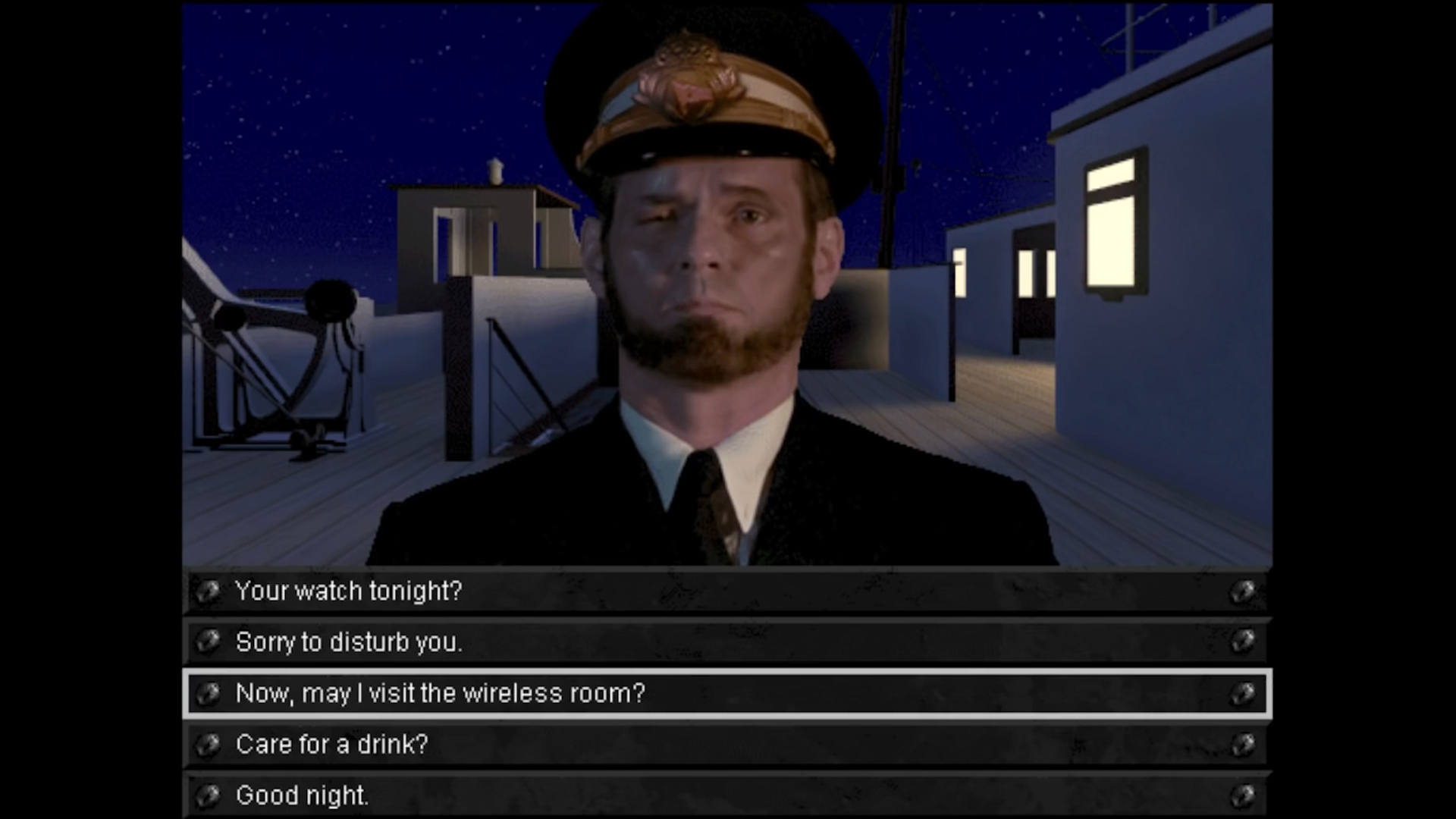
Time travel, international espionage, explosions—not exactly what you expect from a game about the sinking of the Titanic. But Titanic: Adventure Out of Time, a '90s FMV adventure made by a little studio in Tennessee, isn't your typical Titanic story. It's definitely bolder (and maybe even more ambitious?) than more famous Titanic stories, tying the events on the ship into other historical moments from the 20th century.
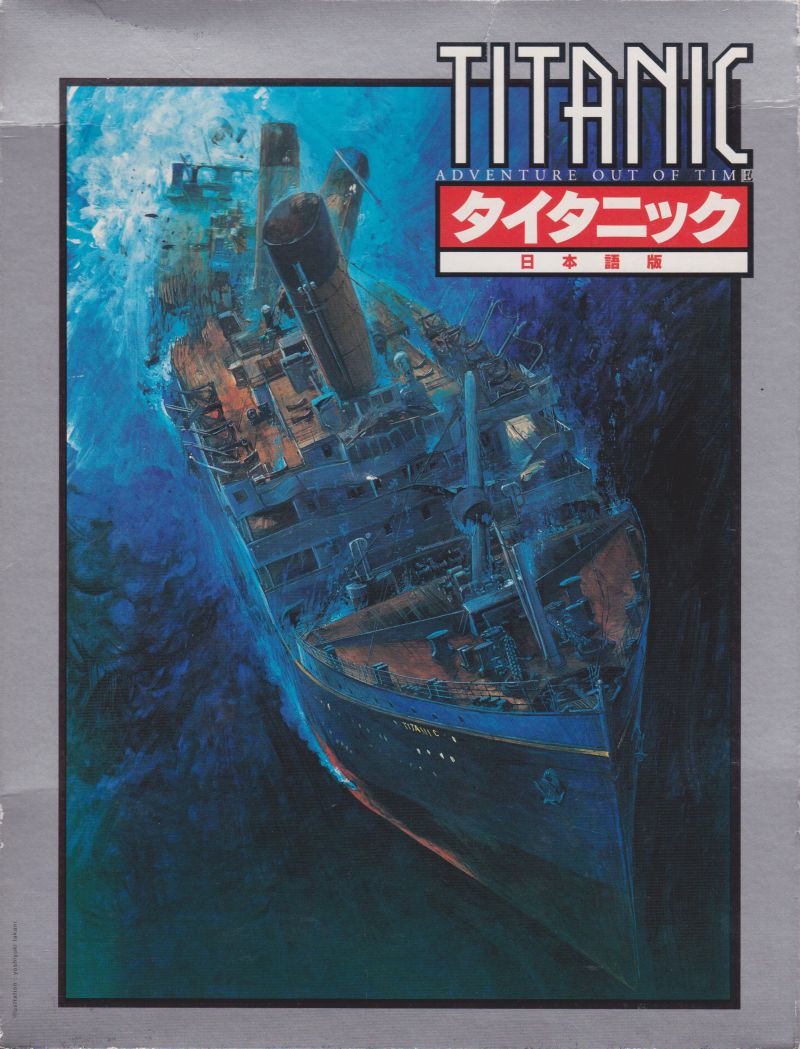
Released in 1996, Adventure Out of Time was a moderate success, but it wasn't enough to save developer CyberFlix's failing publisher GTE Entertainment. Then James Cameron came along. Luckily CyberFlix was able to keep the rights to the game and re-release it in the wake of the blockbuster film, in perhaps one of the most fortuitously timed video game releases in history.
No one expected Titanic: Adventure Out of Time to be such a smash hit—especially the people who made it. CyberFlix wasn't the most-well known or well-connected studio. In fact, it was mostly made up of graduates from the nearby University of Tennessee and was based out of an unassuming location in downtown Knoxville.
"We had washing machines in the back," recalls Michael Kennedy, a 3D designer on Titanic: Adventure Out of Time. "It was somebody's condo. There were bathrooms and laundry facilities, and I think someone was actually living in one of the back rooms for a couple of months or something.
"It was like a tree fort. We'd show up, you'd spend all your waking hours, then you'd go home and get a couple hours of sleep and come back in as soon as you could manage. We had some very good parties at that place and we had bands come in and all that. It was very much a lifestyle… and pretty punk-rock, I think."
Titanic: Adventure Out of Time was produced on a modest budget for a project of its scope. And it sold decently when it debuted in 1996: 100,000 copies in its first two months. But that turned out to be just a warm-up for 1998, when it re-entered the PC charts after Titanic's release. By 1999, it had sold more than a million copies. Most at the studio couldn't believe their luck, and took the newfound success as a sign of a bright future for the company.
"I would love to say that we had some insight into what was coming, but really a lot of people were working on Titanic projects at the time, not just us," says Andrew Nelson, the writer and producer on Adventure Out of Time. In 1996 there was an award-winning novel set on the Titanic; in 1997, a Broadway musical. When they started their game, CyberFlix's developers had no idea James Cameron's movie was also in production.
The biggest gaming news, reviews and hardware deals
Keep up to date with the most important stories and the best deals, as picked by the PC Gamer team.
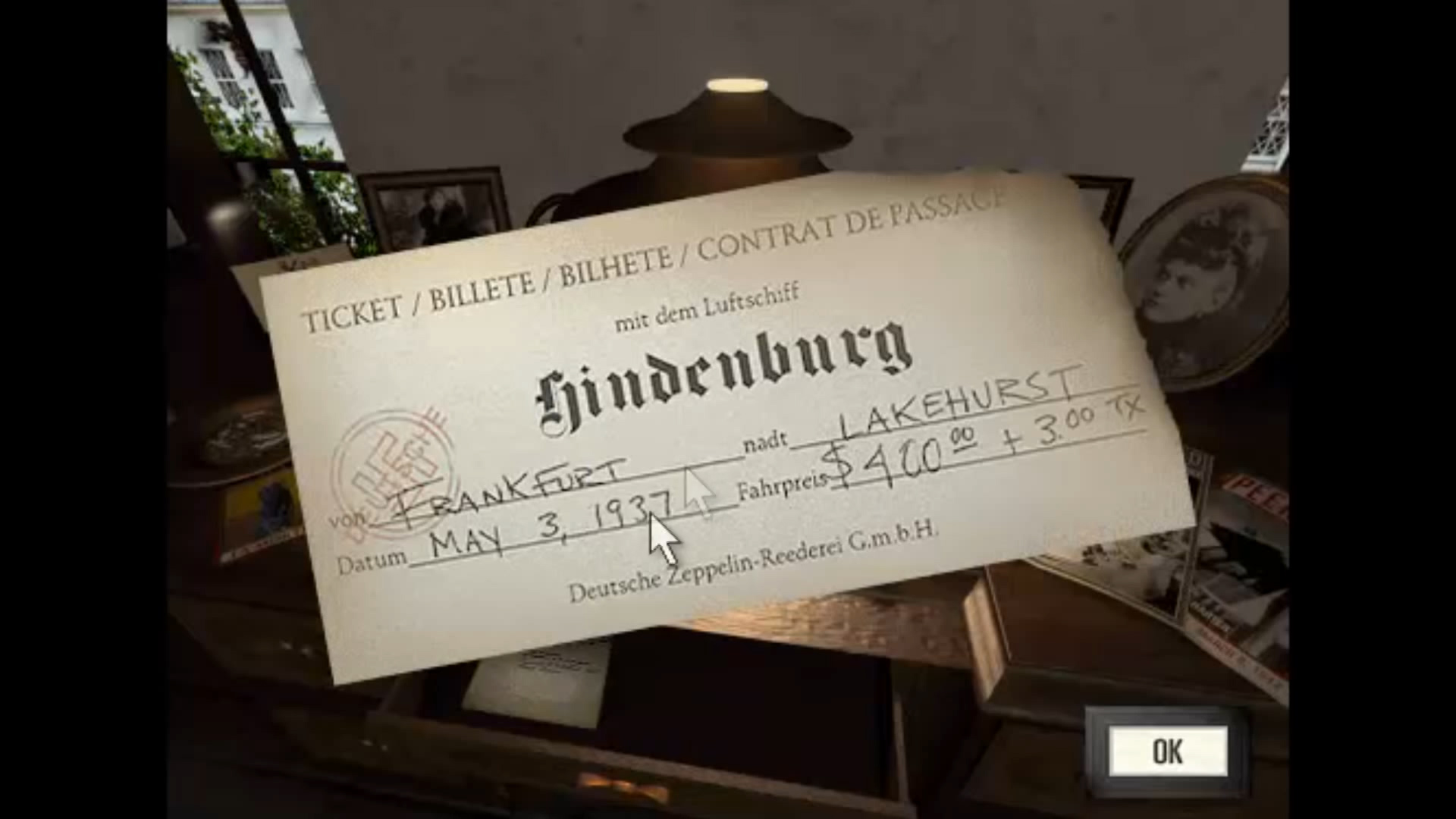
"I still remember being at E3… and having all these Hollywood lawyers rush over and stare at our demo reel," Nelson says. "They were obviously searching for something that could be copyrighted, but they obviously couldn't find anything because the Titanic is a historic event."
Aside from the ship, the game and the movie didn't have much in common. In Titanic: Adventure Out of Time you play as Frank Carlson, a disgraced civil servant. The game starts with Carlson looking over old newspaper clippings in 1942, when an explosion sends him back in time to the Titanic's final days (see, history can be exciting). Carlson had actually been aboard the Titanic in 1912 to prevent the exchange of stolen war plans, but failed his mission the first time around. Given a second chance he's determined to stop the trade from happening, in the hopes of steering Europe away from World War I.
To obtain the perfect ending, you needed to find four MacGuffins, including a valuable copy of Omar Khayyam's Rubáiyát, some diamond jewellry, a hideous painting concealing secret war plans, and a notebook with the names of Russian revolutionaries. You only had a finite amount of time to accomplish this, however, with certain tasks moving the clock closer to the ship's inevitable sinking and the mad dash to escape the wreck.
That ticking clock was meant to make the game more approachable for time-strapped players. "I came up with the game while flying back from New York where I'd been visiting my brother and his wife," Nelson says. "They had two toddlers at the time, and my sister-in-law… was intrigued with these new CD-ROM games, but she had heard they take forever and she didn't have all that much time. So, on the way back to Knoxville from New York, I was reading an article in the Economist about the Titanic and it mentioned that the ship had sunk in under two and a half hours."
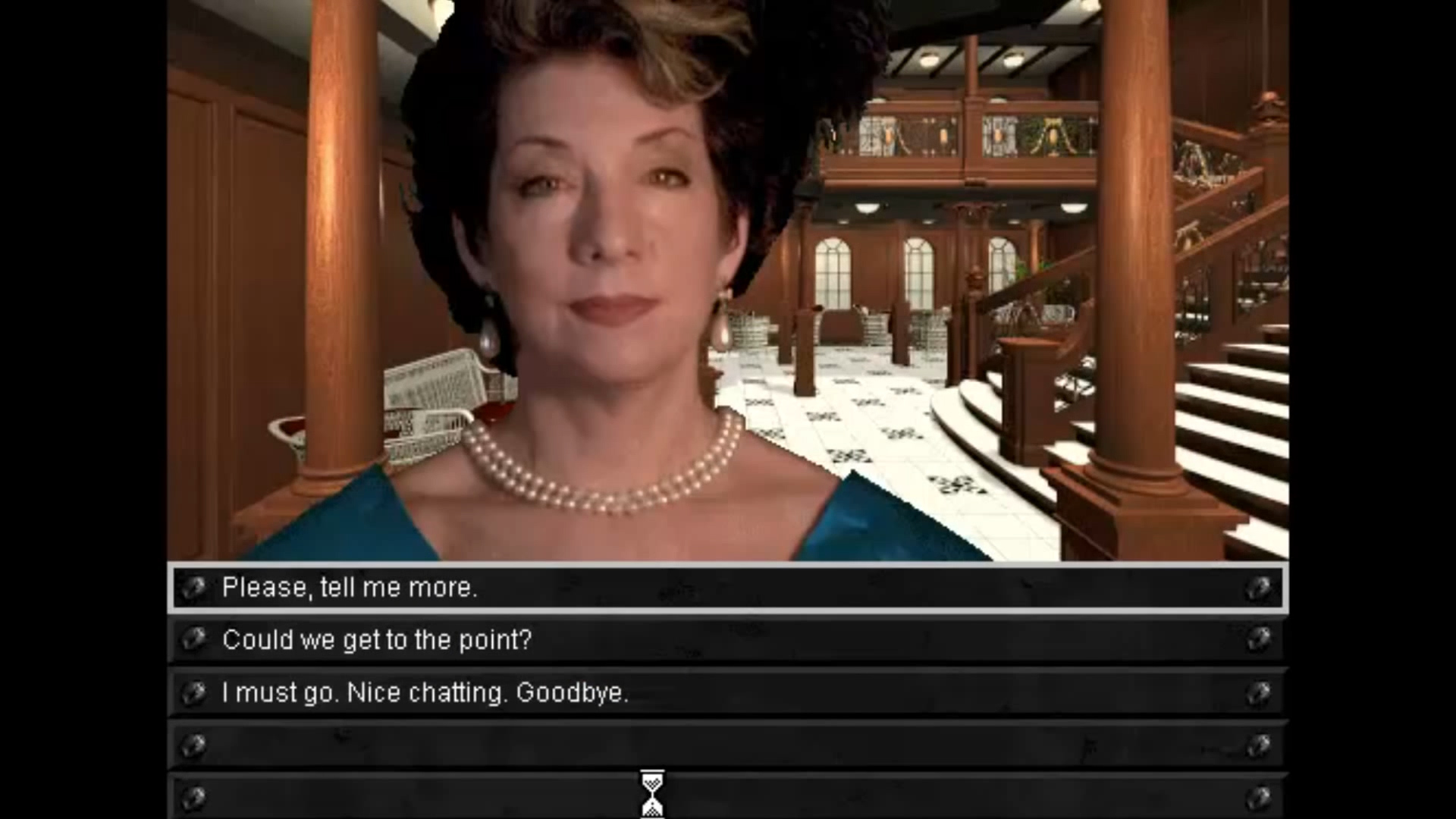
For the most part, Adventure Out of Time controls like your standard 3D point-and-click adventure. You navigate the ship by using the arrow keys and interact with items and passengers by pressing the left mouse button and either dragging or selecting from a list of options. Occasionally you get into a first-person fistfight, but these instances are pretty rare, with the game mostly made up of exploration and puzzle-solving.
From playing Adventure Out of Time as a kid, I mostly remember exploring the ship and talking to the oddball characters. There's Buick Riviera, a Blackjack aficionado in the smoking room; John Smethells, the uptight ship steward; a scouse lift attendant stationed near the grand staircase; and the psychic Leyland Trask, who offers hints using his supernatural abilities.
All of these roles were brought to life by real actors, many of whom were Knoxville locals and part of a theatre group that also provided the costumes. The actors had their likenesses scanned to a computer and animated before being dubbed over with dialogue recorded by Nelson's friends at the BBC. Despite often-shaky accents, this digital ventriloquism is weirdly effective. It helps create an uncanny and oppressive atmosphere that permeates Adventure Out of Time. Whether you're trying to break into a room, chatting with passengers, or simply staring absent-mindedly at a tea tray, the game treats each action with the same intensity.
"People use the word 'haunting' a lot to describe this game," Nelson says. "And I know the feeling, because late at night while I was checking out if the dialogue was working and I was strolling down those hallways—and how they were lit by our designers, and the amazing score that Scott Scheinbaum did, it had a very otherworldly feeling to it. Sometimes even I would get chills walking through it and encountering some of these passengers."
Despite the phenomenal success of the Titanic, CyberFlix unfortunately wouldn't last much longer. Nelson was the first to leave, citing dissatisfaction with the direction the company was taking. He was disappointed the other founders weren't willing to invest in more historical-based adventure games.
CyberFlix couldn't replicate the popularity of Titanic: Adventure Out of Time with its final game, Redjack: Revenge of the Brethren. There was no magical timing to make it a smash hit, and CyberFlix ceased all productions in 1998.
At the time CyberFlix shut down game production, the studio had been moving forward with two games: a sequel to its 1994 shooter Jump Raven and a mutant clown horror game called Three-Ring Apocalypse. Neither was released, with studio co-founder Bill Appleton announcing he was unwilling to gamble his money on any future projects. For many of the staff, it was a bitter comedown from the heights of just a year prior.
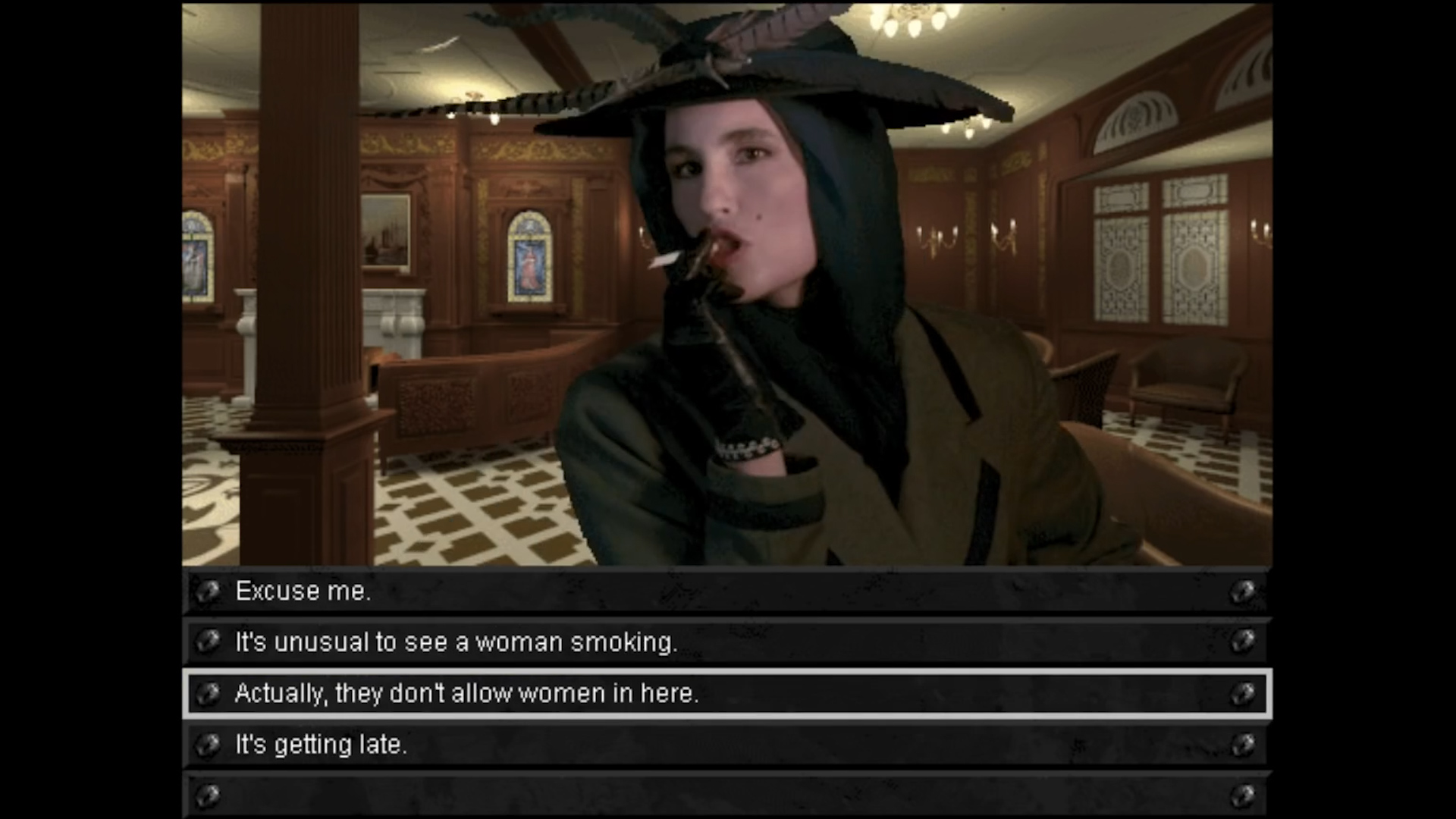
"I don't know if it had just run its course. Working in the visual effects industry or games industry, as we all know, is rather choppy," says Michael Kennedy. "Things can end unexpectedly. But that was my first time, so that was a point of great fear and 'Oh gosh, what are we going to do now?' Because this was pre-internet, so you didn't get on LinkedIn and go looking for your next gig. It was like, 'I'm in a small town in the middle of Tennessee and there's nobody else doing 3D work for several hundred miles.' But fortunately, I was able to get some referrals and stuff and moved onto the next thing."
Looking back, Kennedy and Nelson are in awe of what they were able to achieve given the size of the team and the resources they had available to them. CyberFlix had started with just a handful of people working out of Bill Appleton's garage, and at its peak was still only 30-40 people stuffed into a condo. According to Kennedy, there were no extravagant server rooms or endless rows of expensive workstations. Every piece of new equipment at the time represented a huge investment for the company that it expected to make back.
"It was definitely a labour of love," Kennedy says. "It was one of those things we really put blood and sweat into... all you were doing was working on this project. I think that really shows."
If you want to play Titanic: Adventure Out of Time, you're in luck. Unlike other games from the era that have since crumbled into abandonware, it's available on both Steam and GOG, so that a brand-new generation can explore the cursed ship. Just don't expect to see Leonardo DiCaprio anywhere in sight.

